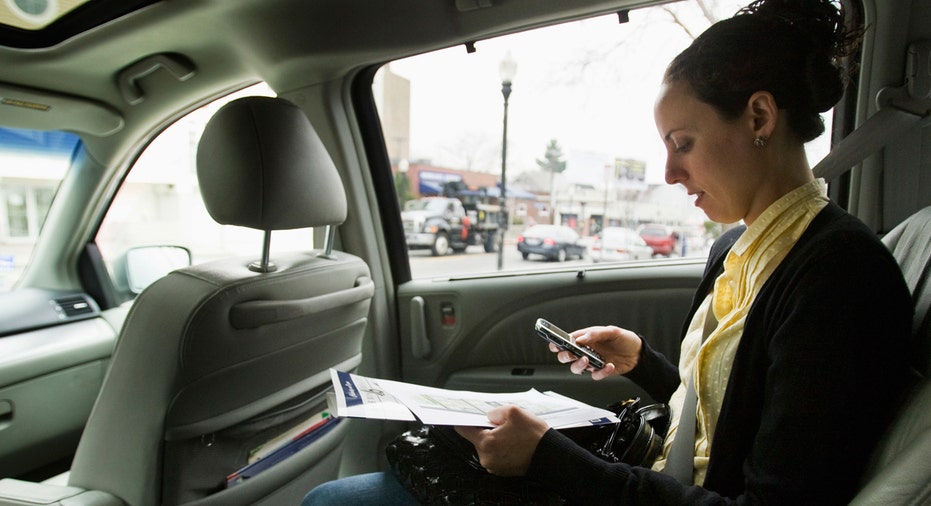Can the Mortgage Process Really Be 100% Digital?

Technology advances have reinvented mobile phones, music, TV, and many other industries in the past decade. And now technology is finally beginning to overhaul the mortgage process.
But is it really possible to have a 100-percent digital mortgage? Let’s take a look.
Clarifying the digital mortgage process
The two biggest misconceptions of digital mortgages are that you can get a mortgage with the push of a button, and that you won’t have to provide as much documentation.
When you make a video call or stream a song or movie, you’re literally pushing a button or two. But a mortgage is still a major financial transaction requiring documentation and analysis of your full financial life, so you’ll need to put in some effort — even when it’s sped up by a digital process.
Likewise, digital mortgages speed you up, but typically don’t reduce the documentation required.
Reduced documentation mortgages played a major role in setting off the financial crisis in 2008 as lenders required less and less income, asset, and employment verification to approve mortgages.
Then the reverse happened for years after the crisis: lenders would provide seemingly never-ending checklists of required documentation to approve and close your mortgage.
Today, you’re still providing the same amount of documentation, but the efficiencies of technology make the process much easier.
For example, today you’re answering questions about credit, residence, and employment history in an online form, whereas just two years ago you would have had to write, sign, and send letters to answer acceptably.
And today you can authorize your lender to obtain pay stubs, bank statements, and tax returns from the sources rather than assembling and sending all of this documentation yourself.
What you can do digitally vs. what you can’t
The federal laws created after the crisis require lenders to prove (with your full documentation) that they’ve verified your ability to repay your mortgage before you take it out.
To do this, lenders must follow eight federally required loan approval factors. So if a digital process doesn’t satisfy these parameters for any reason whatsoever, you can be sure your lender will send you follow-up checklists requesting more documentation.
If you applied online originally, follow-up checklists and documentation may be requested and provided online, or the old-fashioned email way. Each lender’s process is different, and your lender will instruct you.
Processes are also different depending on loan size and type.
For example, if you’re applying for a conforming mortgage up to $417,000; you’ve been a straight salary employee (that is, receiving no bonus or commission) at a large company for more than two years; you file your taxes using an online service; and you have online accounts with all of the financial institutions that have your money, then the digital mortgage process will likely be very easy. You apply online; authorize your lender to directly obtain pay stubs, bank statements, and tax returns on your behalf; and run a credit report. Then the digital process will analyze this documentation, and run an automated loan approval. For a profile like this, you could be approved in 10 to 30 minutes.
Conversely, if you’re applying for a jumbo mortgage above $417,000; you’re self employed with multiple sources of income; you have a tax adviser manually prepare your taxes; and you don’t have online accounts with all of the financial institutions that have your money, then the digital mortgage process will require more human intervention by you and your lender. You apply online and provide the same authorizations as above, but you’ll need to assemble and submit a lot of documentation yourself, and you’ll likely see follow-up checklists as your lender manually reviews and approves your file — because loans above $417,000 are often ineligible for automated approval. The process could take hours or days.
How many lenders offer digital mortgages?
Today, the digital revolution is still working its way through the mortgage industry. You might get amazing technology or outstanding service and advice, but not all lenders have married both so far.
As more lenders adopt the digital processes described above, your decision as a mortgage shopper will come down to whether you want to run the whole process yourself online, or you want an adviser to help you in person along the way.
Because home buying is a large — and often intimidating — financial decision, good advice is likely to remain at the forefront of the mortgage offering. So if you want great advice plus the efficiencies of a digital process, it’s best to start by finding a great local lender, then interviewing them about their digital offerings.
More from Zillow:5 Mortgage Misconceptions Set StraightThe 4 Most Important Mortgage Documents You’ll Sign5 Things You Need to Know Before You Finance a New Home
Note: The views and opinions expressed in this article are those of the author and do not necessarily reflect the opinion or position of Zillow.
Julian Hebron is a mortgage banking executive and writer based in San Francisco. He’s the editor of influential consumer finance and housing blog The Basis Point, and EVP of Sales with RPM Mortgage. His work is regularly cited by CNBC, The Wall Street Journal, and Marketwatch. Follow him on twitter: @thebasispoint